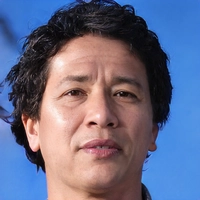Job Acquisition in the World of Motorsports
When tackling job acquisition, the process of finding, applying for, and landing a role. Also known as career hunting, it becomes a unique challenge in the fast‑paced environment of racing. A successful motorsport career, a path that blends driving skill, technical know‑how, and team dynamics, often starts with the right job acquisition strategy.
Mastering job acquisition means you need to understand three core ideas: first, the kinds of roles available on a racing team; second, the skills teams look for; and third, the networking channels that connect talent with opportunities. For example, racing team recruitment, the systematic process teams use to add drivers, engineers, and support staff shapes the talent pool and directly influences how you position yourself.
Key Steps for Securing a Motorsport Role
Step one is research. Look at recent news—like the surge of Mbappé under Xabi Alonso at Real Madrid or the rivalry fueling the Ryder Cup—to spot trends. Teams that excel in high‑pressure environments often value adaptable drivers and engineers who can handle fast‑changing data. Step two is skill development. A good driving school, a program that teaches track techniques, vehicle dynamics, and racecraft equips you with the hands‑on experience recruiters love. Step three is building a personal brand—share lap times, discuss technical tweaks, and comment on safety measures like those in motorcycle racing.
These steps create a semantic chain: job acquisition encompasses research, which influences skill development, which in turn fuels effective networking. In practice, you might analyze a post about LMP1 vs IndyCar speed to illustrate your grasp of vehicle performance, then tailor your résumé to highlight relevant data analysis abilities.
Another important angle is understanding the business side of motorsports. Posts about why Bugatti doesn’t run a racing team reveal how brand strategy impacts hiring. Knowing whether a team focuses on luxury hypercars or endurance racing helps you match your expertise—whether you specialize in aerodynamics, powertrain development, or pit‑stop logistics.
Networking isn’t just about LinkedIn. Attend track days, volunteer at local events, and join forums where fans discuss topics ranging from Indy 500 qualification rules to the most grueling car races. Engaging in these conversations demonstrates passion and gives you insider information about upcoming openings.
When you finally apply, treat each application like a race. Your cover letter is the qualifying lap: it must be fast, precise, and highlight your top speed—your most relevant achievement. Use concrete numbers: “Reduced lap‑time by 0.3 seconds through suspension tuning” reads better than vague claims.
Finally, prepare for interviews by rehearsing scenario‑based questions. Teams love to hear how you’d react to a safety incident in motorcycle racing or a strategic decision like Alonso’s tactics that sparked Mbappé’s surge. Showing that you can think on your feet proves you belong in a high‑stress motorsport environment.
All these elements—research, skill development, networking, tailored applications, and scenario prep—form a complete job acquisition playbook for the motorsport world. Below you’ll find a curated list of articles that dive deeper into each of these topics, from technical car comparisons to the best value racing schools, giving you the tools you need to accelerate your career.

